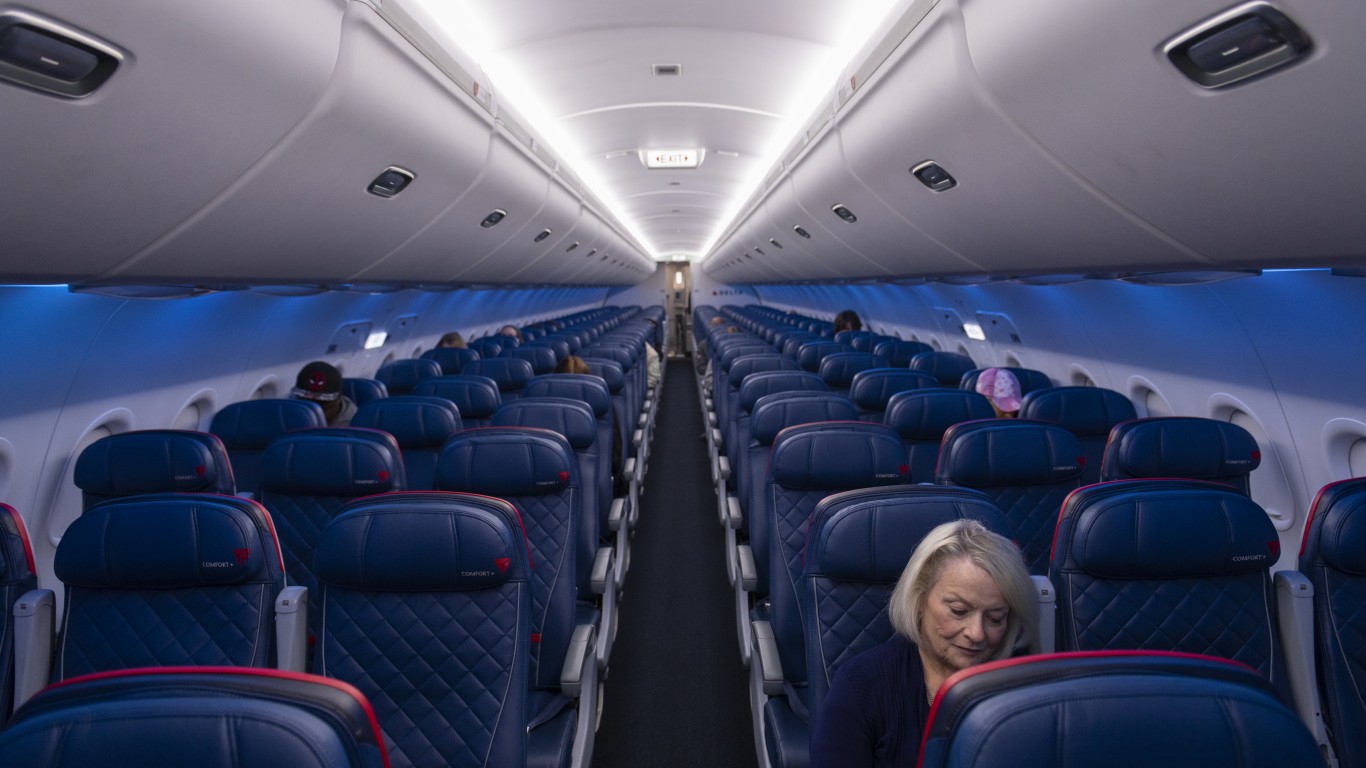Companies and Brands
Why Good News From 3 Top Airlines Can't Keep Their Stocks Flying Higher

Published:

The comorbidity of the instant recession and COVID-19 has caused severe damage to anything tied to tourism. The airline industry previously enjoyed extremely healthy balance sheets and full planes, and demand was so strong that the airlines were able to dictate whatever terms and flying conditions they wanted. That’s all over, and now airlines had to take a government bailout and get creative about their financing.
Investors sold airline stocks as if they were all doomed. Even Warren Buffett made perhaps the worse trade of his career by selling out all his billions of dollars worth of major airline stocks at substantial losses. What was impossible to ignore was just how much the major airlines rebounded from their lows in this stock market recovery and as the economic data were signaling an uptick in travel-related demand ahead. What else had become impossible to ignore was that the airline industry’s massive stock price recovery was just too much too fast, and the expectations versus reality on the return to travel spending were at a complete mismatch.
Three airlines have tried to sound like they are conveying some good news for travel plans ahead, but there is a reason beyond what these companies are saying that is tempering expectations.
Delta Air Lines Inc. (NYSE: DAL) held its annual shareholder meeting in the new virtual meeting format that has become so common. Delta expects to end this quarter with $15 billion in liquidity and it expects its $30 million cash burn per day to be near zero by the end of this year.
Delta will further save cash by closing its Sky Clubs. Delta’s current load factors are in the mid-40s (percentage the planes are full) and the ticker demand they are seeing is expected to get into the 50s ahead. That may not reach profitability, but the airline is currently capped at 60% loads for social distancing.
Investors chose to take a “sell the news” approach, and Delta shares were down almost 1% at $30.39 on Thursday afternoon. It did not even help that Citigroup in prior days reiterated its Buy rating and raised its target to $38 from $30.
Southwest Airlines Co. (NYSE: LUV) issued an update on Wednesday showing that it has started seeing net positive bookings in June, but the load factor in May was only about 30% and the operating revenues were down 85% to 90%. The forecast for July, based on bookings and ticket activity, was for operating revenues to be down 65% to 70% and for its load factor to range from 45% to 55%.
Shares of Southwest Airlines traded down 1.2% at $35.87 on Thursday. Its 52-week range is $22.47 to $58.83.
JetBlue Airways Corp. (NASDAQ: JBLU) announced on Thursday that it is reactivating aircraft to launch 30 new market routes. It plans to operate more than half of its normal summer volume. Still, JetBlue shares were down 0.7% at $11.85 on Thursday. Their 52-week range is $6.61 to $21.65.
Investors who are betting on a rapid recovery to normal life from the pre-pandemic level may be relying on hope more than actual industry forecasts. While the forecasts can change, 24/7 Wall St. outlined a dire survey on total travel spending dollars signaling a 45% drop in 2020. What is worse, despite an overall bounce expected in 2021, is that even in 2022 and 2023 most of the travel spending metrics are not expected to be back to 2018/2019 levels.
Shares of American Airlines Group Inc. (NASDAQ: AAL) traded down worse than Delta and Southwest with a 2.4% drop to $16.57. Its 52-week range is $8.25 to $34.99.
United Airlines Holdings, Inc. (NASDAQ: UAL) was down 1.1% at $38.82, and its 52-week range is $17.80 to $96.03.
This issue continues to be a prime cap on shares of Boeing Co. (NYSE: BA). The company is still seeking recertification for its troubled 737 Max after two deadly crashes in 2019, and there may even be a case now that Boeing’s 737 Max may not even matter. Boeing’s atrocious deliveries and orders signal that there may not be any airlines that are buyers of new jets and that order cancellations are likely to persist while the airlines are using bailout money and trying to keep their payrolls.
What investors now are dealing with is that the old stock price highs and the old valuation metrics just do not really have any relevance any longer. Why do former P/E ratios matter now with government loans and bailouts? How many years before they can get back to peak revenues? How many planes are they going to have to park out in the “boneyard” until demand recovers?
Investors were very quick to buy the recovery stocks back up. With a new wave of COVID-19 cases coming into play, and with the almost certain probability that not a single airline can be profitable in 2020, the good news probably will have to start looking like it can get a lot better to justify much higher stock prices in the airlines.
If you’re one of the over 4 Million Americans set to retire this year, you may want to pay attention.
Finding a financial advisor who puts your interest first can be the difference between a rich retirement and barely getting by, and today it’s easier than ever. SmartAsset’s free tool matches you with up to three fiduciary financial advisors that serve your area in minutes. Each advisor has been carefully vetted, and must act in your best interests. Start your search now.
Don’t waste another minute; get started right here and help your retirement dreams become a retirement reality.
Thank you for reading! Have some feedback for us?
Contact the 24/7 Wall St. editorial team.